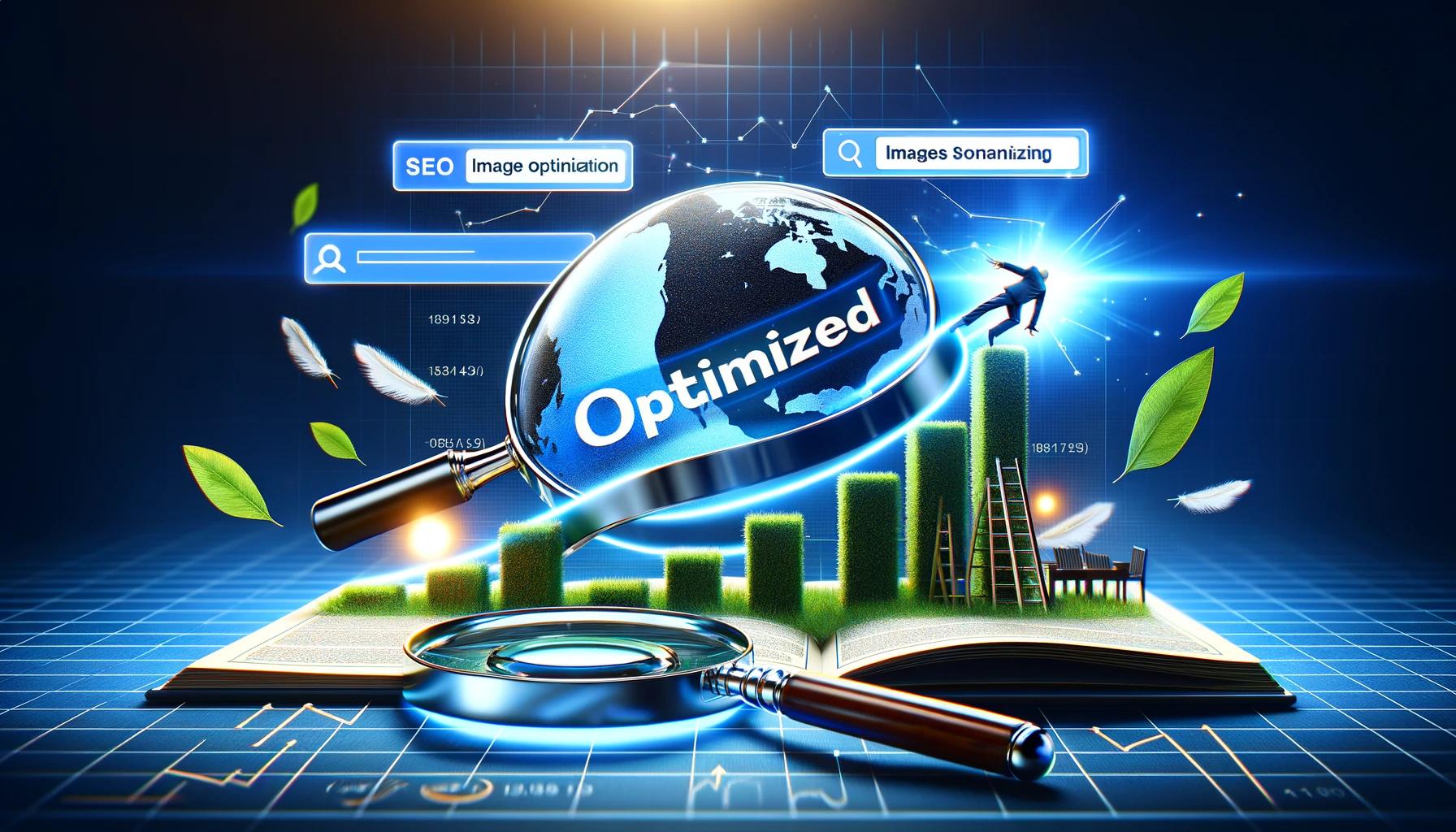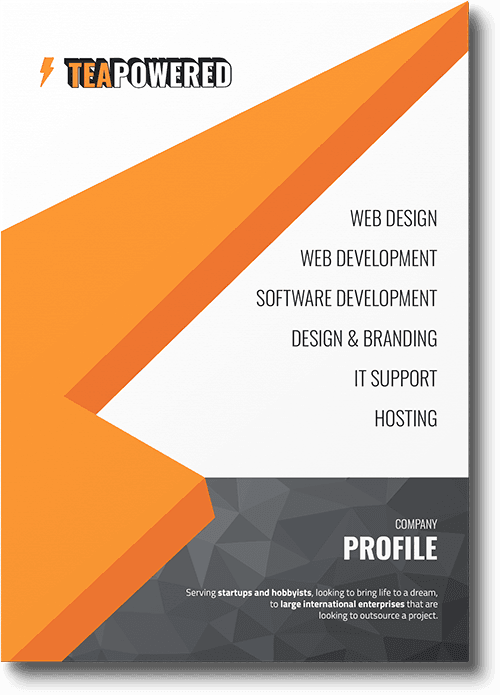In the digital age, a picture is worth more than a thousand words; it's worth countless clicks, shares, and engagement. But there's a catch – these images need to be optimised to ensure they're not slowing down your site or harming your SEO. That's where the magic of image optimisation comes into play, a crucial yet often overlooked aspect of web development and digital marketing.
The Technical Side of Image Optimisation

Ever wondered why some websites load faster than others, despite being heavy on visuals? The secret lies in image optimisation. By choosing the right format and compression level, you can significantly reduce file sizes without compromising quality. This not only speeds up your website but also conserves bandwidth and improves overall performance.
At its core, image optimisation serves two primary technical objectives: reducing file size and improving load times without sacrificing visual quality. Websites heavy with un-optimised images tend to load slowly, which can frustrate users and increase bounce rates. In a digital era where speed is king, even a one-second delay in page response can result in a 7% reduction in conversions, according to a study by Akamai.
The technical magic behind image optimisation lies in its ability to strip unnecessary metadata (like camera details, GPS coordinates, etc.) and compress image data. This process significantly reduces the image's file size, which in turn decreases the amount of data that needs to be downloaded by the browser. The result? A faster, more efficient website that keeps both users and search engines happy.
The Role of Image Formats and Compression
Choosing the right image format is crucial for optimization. Here's a closer look at the most common formats:
JPEG (Joint Photographic Experts Group): Ideal for photographs and images with gradients, JPEG is a lossy compression format, meaning some quality is lost each time the image is saved. However, it allows for adjusting the compression level to balance quality and file size.
PNG (Portable Network Graphics): Best for images requiring transparency or images with text, sharp edges, and logos. PNG is a lossless format, meaning it retains all image data and quality, but this can result in larger file sizes compared to JPEG.
WebP: Developed by Google, WebP is a modern format that provides superior lossless and lossy compression for images on the web. It supports transparency and can reduce file sizes significantly more than PNG and JPEG, making it an excellent choice for all types of web images.
Compression Techniques
Lossy Compression: This technique reduces file size by permanently eliminating certain information, especially redundant or unnecessary data. While this can affect image quality, if done correctly, the visual difference can be negligible to the human eye, especially at lower compression levels.
Lossless Compression: Lossless compression reduces file size without losing any image quality. This is ideal for images that require high detail and clarity, such as technical diagrams or logos. Techniques include reducing color depth and using software tools that eliminate redundancies without affecting the image's visual integrity.
Tools and Techniques for Effective Compression
Several tools and techniques can be employed for effective image optimization:
Adobe Photoshop: Offers extensive options for image compression, allowing users to choose the exact level of compression and preview the outcome before saving.
Online Compressors: Tools like TinyPNG or Compressor.io provide easy-to-use interfaces for quickly compressing images without the need for professional software.
Content Delivery Networks (CDNs): Some CDNs offer built-in image optimization features, automatically adjusting the format and compression based on the end user's device and browser capabilities.
SEO Benefits of Proper Image Optimisation

Imagine two websites: one load in a blink, and the other takes its sweet time. Which one would you prefer? Search engines think the same way. Faster loading times lead to better rankings. Moreover, optimised images can be indexed more effectively, making your site more visible to potential visitors.
Improved Page Load Times and Its Effect on SEO
One of the most direct benefits of image optimization is the improvement in page load times. Search engines like Google have explicitly stated that page speed is a ranking factor for both desktop and mobile searches. Faster websites provide a better user experience, leading to higher engagement rates, lower bounce rates, and increased time on site. Optimised images significantly contribute to this by ensuring that web pages load quickly, even on mobile devices with slower internet connections. According to Google, over half of mobile site visitors leave a page that takes longer than three seconds to load. By optimising images, websites can avoid this pitfall, positively impacting their SEO rankings.
Enhanced User Experience Leading to Better Engagement
User experience (UX) is at the heart of a successful digital platform. Optimised images not only load faster but also appear clearer and more appealing to the viewer. This visual appeal is crucial for keeping visitors engaged and interested in the content. High-quality, fast-loading images can reduce bounce rates and encourage visitors to explore more pages on the site, increasing the chances of conversion. Furthermore, optimized images are less likely to distort or pixelate on different devices, ensuring a consistent and professional appearance across all platforms.
Increased Mobile Responsiveness
With the increasing prevalence of mobile internet usage, having a mobile-responsive website is no longer optional. Image optimization plays a crucial role in mobile responsiveness. Responsive images automatically adjust to fit the screen size and resolution of the device they're being viewed on, providing an optimal viewing experience without unnecessary data usage. This adaptability not only improves UX but also contributes to SEO, as Google uses mobile-first indexing when evaluating websites.
Better Image Indexing and Visibility in Image Search
Optimised images are more likely to be indexed correctly by search engines, making them appear in relevant image search results. Proper use of file names, alt text, and surrounding content can enhance the context and relevance of images, further improving their visibility in searches. This visibility is particularly important for e-commerce sites and businesses relying on visual content to attract and engage users.
Reduced Server Load and Lower Hosting Costs
Image optimisation can significantly reduce the amount of data stored and transferred by a server, leading to faster response times and lower bandwidth usage. For websites with high traffic volumes or large image databases, this can translate into substantial savings in hosting costs. Additionally, a lighter server load reduces the risk of website downtime during peak traffic periods, ensuring a smooth and consistent user experience.
Practical Tips for Optimising Your Images

Choosing between JPEG, PNG, and WebP can feel like rocket science. But fear not! Each format has its place. JPEGs are great for photographs, PNGs excel in transparency, and WebP offers the best of both worlds with superior compression. Tools like Adobe Photoshop, GIMP, and online compressors can help you achieve the perfect balance between size and quality.
1. Choosing the Right Format
JPEG: Best for photographs and realistic paintings. Use JPEG for images where color fidelity is less critical, and subtle gradations are expected. The format is more efficient for detailed, high-contrast images.
PNG: Ideal for images requiring transparency or when you need high-quality, detailed images like logos. PNGs are excellent for graphics with less than 16 colors or when you need to preserve sharp lines and text.
WebP: A modern format that provides superior compression for images on the web, both lossy and lossless. WebP is versatile, supporting transparency and animation, making it a great choice for a wide range of web images. It can reduce file sizes significantly more than JPEG and PNG without sacrificing quality.
2. Utilising Compression Tools and Techniques
Online Tools: Use online tools like TinyPNG, Squoosh, or Compressor.io for quick and efficient image compression without needing professional software. These tools are user-friendly and can significantly reduce file sizes while maintaining acceptable quality.
Photoshop: Adobe Photoshop's 'Save for Web' feature allows precise control over image compression settings. Experiment with different quality levels to find the best balance between image quality and file size. Remember, even a slight reduction in quality (e.g., 80-90% of the original) can result in significant file size savings with minimal impact on visual quality.
Automated Tools: Consider using CMS plugins or scripts like ImageOptim, WP Smush (for WordPress sites), or Shopify's built-in image optimiser for e-commerce sites. These tools automatically compress images upon upload, saving time and ensuring consistent optimisation across your site.
3. Implementing Responsive Images
Use HTML5
Srcset Attribute: Use the
srcsetattribute in yourCSS Media Queries: For background images, use CSS media queries to load different images for different screen sizes and resolutions.
4. Optimizing Image Delivery
Lazy Loading: Implement lazy loading to delay loading off-screen images until they're about to enter the viewport. This can significantly improve initial page load times and save bandwidth for users who don't scroll through the entire page.
Content Delivery Network (CDN): Use a CDN to serve your images from servers located close to your users. This reduces latency and speeds up image delivery, improving the overall user experience.
Caching: Ensure your server is configured to use caching for images, allowing browsers to store downloaded images in cache. This means repeat visitors will experience faster load times since their browser can load the image from the cache rather than downloading it again.
5. Regularly Auditing Your Images
Perform Regular Audits: Use tools like Google's PageSpeed Insights, GTmetrix, or Lighthouse to analyze your website's performance and identify images that need optimization. Regular audits can help you maintain optimal performance as you add new content to your site.
Update Your Images: Technology and standards evolve, so periodically review and update your images to take advantage of new compression formats and techniques. This is especially important for sites with a large number of evergreen content.
Advanced Strategies for Image SEO

Alt tags aren't just for decoration; they're a cornerstone of image SEO. Descriptive, keyword-rich alt text can significantly boost your site's visibility. Additionally, implementing responsive images ensures that mobile users enjoy a seamless experience, further enhancing your SEO efforts.
1. Mastering Alt Tags
Descriptive and Keyword-Rich: Alt tags should accurately describe the content of the image while also incorporating relevant keywords. This helps search engines understand the context of images and improves the accessibility of your website for users with visual impairments.
Avoid Keyword Stuffing: While it's important to include keywords, ensure your alt text sounds natural and genuinely describes the image. Keyword stuffing can harm your SEO efforts.
Use for All Images: Ensure every image on your site has an alt tag, especially those that are crucial for understanding your content. This includes images used in articles, product images, and even decorative images if they add context to the content.
2. Leveraging Image Sitemaps
Create an Image Sitemap: If your site relies heavily on images to attract and engage users, consider creating a separate sitemap for images or including image information in your existing sitemap. This makes it easier for search engines to find and index your images, potentially increasing visibility in image search results.
Include Essential Details: In your image sitemap, include the image URL, title, caption, geo-location (if applicable), and a license (if necessary). This information can help improve the indexing of your images.
3. Implementing Structured Data
Use Schema Markup: Implementing structured data (schema.org markup) for images can enhance their appearance in search results, particularly for recipes, products, and articles. This markup helps search engines understand the context of the image and can lead to rich snippets in search results, increasing visibility and click-through rates.
Test Your Markup: Use Google's Structured Data Testing Tool to ensure your markup is correctly implemented and that search engines can accurately parse the information.
4. Optimising for Social Sharing
Social Media Tags: Utilise Open Graph tags (for Facebook) and Twitter Cards to control how images are displayed when your content is shared on social media. This ensures that the right image is displayed, making your content more appealing and likely to be clicked on.
High-Quality Thumbnails: Ensure that images designated for social sharing are of high quality and optimised for quick loading. These images should be compelling and relevant to the content to encourage clicks and shares.
5. Focusing on Mobile SEO
Responsive Images: Ensure images are responsive and correctly sized for mobile devices. This reduces bandwidth usage and improves loading times, contributing to a better mobile user experience and SEO.
Test Mobile Performance: Regularly test your website's performance on mobile devices, including image load times, using tools like Google's Mobile-Friendly Test. Mobile performance is a critical factor in SEO, and optimised images play a significant role in achieving good results.
6. Monitoring Image Performance
Analytics and Insights: Use tools like Google Analytics and Google Search Console to monitor how your images are performing in terms of traffic and engagement. Look for trends in image search queries and adjust your strategy accordingly.
Competitive Analysis: Regularly check how your images rank in comparison to competitors' images in search results. Identify what they might be doing differently or better, and adjust your image SEO strategy to compete more effectively.
Conclusion

Image optimisation is an art and a science, offering the dual benefit of enhanced SEO and improved site performance. By embracing these strategies, you can ensure that your site not only ranks higher but also provides a superior user experience.
